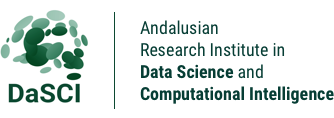MonuMAI-Open Data
MonuMAI-Open Data is a public, knowledge-rich database of monument images that has been created in the context of the MonuMAI Citizen Science project
MonuMAI is a citizen science project of the Fundación Descubre and the University of Granada that offers us the opportunity to get closer to the great artistic styles of Medieval Andalusia and the Modern Age, which are the ones that have most contributed to the genesis of the historical centres of Andalusia, combining heritage, mathematics and artificial intelligence..
Thanks to this project, it has been developed the MonuMAI app and this open database. More information is available in the related publication:
Lamas, Alberto & Tabik, Siham & Cruz, Policarpo & Montes, Rosana & Martínez-Sevilla, Álvaro & Cruz, Teresa & Herrera, Francisco. (2020) MonuMAI: Dataset, deep learning pipeline and citizen science based app for monumental heritage taxonomy and classification. Neurocomputing. doi.org/10.1016/j.neucom.2020.09.041
MonuMAI-Open Data is a public, knowledge-rich database of historical monument images. It has been annotated by three experts using two types of annotations, making it useful for the tasks of classifying the architectural style of monuments and detecting key architectural elements.
Images used for the preparation of MonuMAI were selected so that the monument is centered, occupies the majority of the image, and has a high quality so that the characteristics of the monument can be observed. Images were picked from the Internet and from smartphone cameras thanks to our own educational application MonuMAI, available for Android and iOS.
Classification of architectural styles
The first version of MonuMAI-Open Data database contains 1,514 RGB images of monument facades of four architectural styles: Hispanic-Muslim, Gothic, Renaissance and Baroque. The images selected for the development of MonuMAI are suitable for classification because the monument occupies most of the image.

Detection of key architectural elements
In addition to the labelling of the style of the monument, each of our images provides additional expert knowledge about the existing key elements. The area where each characteristic element of the image is located is delimited by a box that is labeled with the name of one of the fifteen key elements (see figure). The data includes 6650 annotated key elements distributed in the fifteen classes of architectural elements.

Download:
The image database is organized in folders by style. In addition, xml annotations are in specific folders. More detail about the monument database and its download access in the following repository: https://github.com/ari-dasci/OD-MonuMAI
Date:
July 2020
Contact:





